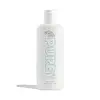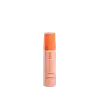What's inside
What's inside
 Key Ingredients
Key Ingredients

 Benefits
Benefits

 Concerns
Concerns

 Ingredients Side-by-side
Ingredients Side-by-side

Water
Skin ConditioningDihydroxyacetone
Skin ConditioningPropylene Glycol
HumectantTrideceth-9
EmulsifyingPolysorbate 20
EmulsifyingPEG-5 Ethylhexanoate
EmulsifyingGlycerin
HumectantPhenoxyethanol
PreservativeButylene Glycol
HumectantDimethyl Isosorbide
SolventSodium Hyaluronate
HumectantAscorbic Acid
AntioxidantTocopheryl Acetate
AntioxidantAloe Barbadensis Extract
Skin ConditioningPEG-12 Dimethicone
Skin ConditioningErythrulose
TanningPEG-12
HumectantPEG-12 Allyl Ether
Disodium EDTA
Potassium Sorbate
PreservativeSodium Benzoate
MaskingBenzyl Alcohol
PerfumingWater, Dihydroxyacetone, Propylene Glycol, Trideceth-9, Polysorbate 20, PEG-5 Ethylhexanoate, Glycerin, Phenoxyethanol, Butylene Glycol, Dimethyl Isosorbide, Sodium Hyaluronate, Ascorbic Acid, Tocopheryl Acetate, Aloe Barbadensis Extract, PEG-12 Dimethicone, Erythrulose, PEG-12, PEG-12 Allyl Ether, Disodium EDTA, Potassium Sorbate, Sodium Benzoate, Benzyl Alcohol
Water
Skin ConditioningPropylene Glycol
HumectantDihydroxyacetone
Skin ConditioningGlycerin
HumectantAloe Barbadensis Leaf Juice Powder
Skin ConditioningDimethyl Isosorbide
SolventTerminalia Ferdinandiana Fruit Extract
AntioxidantEthoxydiglycol
HumectantCocamidopropyl Betaine
CleansingPEG-12 Dimethicone
Skin ConditioningPEG-7 Glyceryl Cocoate
EmulsifyingCaprylyl/Capryl Glucoside
CleansingArgania Spinosa Kernel Oil
EmollientSodium Hyaluronate
HumectantRosa Canina Fruit Oil
EmollientAscorbic Acid
AntioxidantSodium Lauroamphoacetate
CleansingPhenoxyethanol
PreservativeCaramel
Cosmetic ColorantSodium Metabisulfite
AntioxidantParfum
MaskingCitric Acid
BufferingCI 16035
Cosmetic ColorantCI 19140
Cosmetic ColorantCI 42090
Cosmetic ColorantWater, Propylene Glycol, Dihydroxyacetone, Glycerin, Aloe Barbadensis Leaf Juice Powder, Dimethyl Isosorbide, Terminalia Ferdinandiana Fruit Extract, Ethoxydiglycol, Cocamidopropyl Betaine, PEG-12 Dimethicone, PEG-7 Glyceryl Cocoate, Caprylyl/Capryl Glucoside, Argania Spinosa Kernel Oil, Sodium Hyaluronate, Rosa Canina Fruit Oil, Ascorbic Acid, Sodium Lauroamphoacetate, Phenoxyethanol, Caramel, Sodium Metabisulfite, Parfum, Citric Acid, CI 16035, CI 19140, CI 42090
Ingredients Explained
These ingredients are found in both products.
Ingredients higher up in an ingredient list are typically present in a larger amount.
Ascorbic Acid is is pure Vitamin C. This form makes up the largest amount of vitamin C found naturally in our skin.
Not only is vitamin C great for your overall health and immune system, it also has plenty of benefits on your skin.
Vitamin C is best used for brightening skin. It improves dark spots, acne scars, and hyperpigmentation. This is because it blocks the process of skin darkening when exposed to UV.
Remember: Vitamin C should not replace sunscreen!
Your skin uses vitamin C to build collagen. Collagen is one key component in having a strong skin barrier and plump skin. Vitamin C also plays a role in regulating collagen, thus making it effective in improving wrinkles and fine lines.
Ascorbic acid shows potent antioxidant activity. As an antioxidant, it helps fight free-radicals. Free-radicals are molecules that may damage your skin cells. These antioxidants also protect skin against UV damage.
The best formulations include Vitamin E and/or ferulic acid. These two ingredients help stabilize and provide a boost in the benefits of ascorbic acid. This is because ascorbic acid becomes unstable when exposed to UV and air. In fact, you can tell your ascorbic acid has oxidized when it turns an orange-yellow color.
Ascorbic acid is generally compatible with other ingredients. However, using ascorbic acid with other active ingredients might cause irritation. Two ingredients: copper ions and benzoyl peroxide, will inactivate ascorbic acid completely.
Read more about other types of Vitamin C:
Foods rich with vitamin C include oranges, strawberries, broccoli, bell peppers, and more. When consuming Vitamin C, your skin receives a portion of the nutrients.
Learn more about Ascorbic AcidDihydroxyacetone, or DHA, is a simple sugar. It is frequently used in self-tanning products.
DHA binds to the amino acids in your dead skin cells to create a brown/orange color. Darkening begins to kick in a few hours after application and will continue to develop for up to 3 days. This ingredient can be drying.
Both the US and the EU have approved DHA in self-tanning products. In the EU, DHA is allowed at a maximum concentration of 10%. Most tanning products usually contain amounts between 3-5%.
If you are pregnant or have underlying medical conditions, it is best to speak with a dermatologist about using self-tanning products.
Learn more about DihydroxyacetoneDimethyl Isosorbide is a low-irritation solvent that helps deliver actives into your skin. It is created from glucose.
Research shows how well this ingredient works depends on the active and formulation rather than the concentration alone. This means adding more Dimethyl Isosorbide does not guarantee better penetration of ingredients into the skin.
Glycerin is already naturally found in your skin. It helps moisturize and protect your skin.
A study from 2016 found glycerin to be more effective as a humectant than AHAs and hyaluronic acid.
As a humectant, it helps the skin stay hydrated by pulling moisture to your skin. The low molecular weight of glycerin allows it to pull moisture into the deeper layers of your skin.
Hydrated skin improves your skin barrier; Your skin barrier helps protect against irritants and bacteria.
Glycerin has also been found to have antimicrobial and antiviral properties. Due to these properties, glycerin is often used in wound and burn treatments.
In cosmetics, glycerin is usually derived from plants such as soybean or palm. However, it can also be sourced from animals, such as tallow or animal fat.
This ingredient is organic, colorless, odorless, and non-toxic.
Glycerin is the name for this ingredient in American English. British English uses Glycerol/Glycerine.
Learn more about GlycerinPEG-12 Dimethicone is a type of water-soluble silicone. It has skin conditioning and hydrating properties.
According to a manufacturer, this ingredient's stability is decreased by strong acid or alkali.
Phenoxyethanol is a preservative that has germicide, antimicrobial, and aromatic properties. Studies show that phenoxyethanol can prevent microbial growth. By itself, it has a scent that is similar to that of a rose.
It's often used in formulations along with Caprylyl Glycol to preserve the shelf life of products.
Propylene Glycol is an odorless, colorless liquid. As a humectant, it helps skin retain moisture. It also aids in delivering active ingredients.
Another role of this ingredient is preventing a product from melting or freezing. Propylene glycol also adds antimicrobrial properties to a product, elongating product lifespan.
This ingredient is considered an organic alcohol and commonly added into both cosmetics and foods.
Those with sensitive skin or conditions may develop a rash when using this ingredient.
Learn more about Propylene GlycolSodium Hyaluronate is hyaluronic acid's salt form. It is commonly derived from the sodium salt of hyaluronic acid.
Like hyaluronic acid, it is great at holding water and acts as a humectant. This makes it a great skin hydrating ingredient.
Sodium Hyaluronate is naturally occurring in our bodies and is mostly found in eye fluid and joints.
These are some other common types of Hyaluronic Acid:
Learn more about Sodium HyaluronateWater. It's the most common cosmetic ingredient of all. You'll usually see it at the top of ingredient lists, meaning that it makes up the largest part of the product.
So why is it so popular? Water most often acts as a solvent - this means that it helps dissolve other ingredients into the formulation.
You'll also recognize water as that liquid we all need to stay alive. If you see this, drink a glass of water. Stay hydrated!
Learn more about Water